Experience Contrasting Freshness: The Authentic Sage Pink Ikat
In the world of textiles, some combinations are so unexpectedly perfect that they spark an undeniable sense of joy and artistic harmony. This extraordinary fabric from Uzbekistan is a masterpiece of such bold interplay—a truly captivating Sage pink ikat that feels like a breath of fresh air, a modern interpretation of ancient craft designed for the individual who dares to blend tranquility with vibrant spirit. This is not just a pattern; it is a visual whisper of sophistication, infused with a vibrant heart.
The visual allure of this Sage pink ikat is immediate and deeply refreshing. The dominant hues are a sophisticated, muted sage green and a brilliant, energetic fuchsia pink. These two colors, seemingly disparate, engage in a stunning, high-contrast dialogue across a crisp, clean white background. The sage green offers a calming, earthy presence, reminiscent of serene gardens or dusty Mediterranean landscapes. This is then electrified by the playful, passionate vitality of the fuchsia pink, creating a dynamic visual tension that is utterly unique and unforgettable. This refined palette, grounded by white, speaks of thoughtful design and fearless self-expression.
The Anatomy of a Modern Bohemian Design
The genius of this fabric lies in its ability to take traditional ikat forms and infuse them with a fresh, contemporary spirit through a clever and daring color pairing.
The Interlocking Medallions: The primary motifs are large, elegant, and stylized forms that resemble ornate medallions or abstract, blooming flowers. They are arranged in a rhythmic, repeating pattern that guides the eye along the fabric’s length, creating a sense of structured beauty.
A Dance of Shapes and Lines: The design effectively uses both the colored forms and the white background to create its intricate pattern. Slender, almost pixelated lines radiate from the main motifs, adding a subtle layer of kinetic energy and showcasing the artisan’s precision.
The Soulful Mark of Ikat: What truly elevates this Sage pink ikat from a simple print to a work of art is the signature abr (cloud) effect. The soft, feathered, almost vibrating edges where the colors meet are the authenticating mark of the hand-dyeing process. This beautiful imperfection creates a shimmering, almost ethereal transition between the sage, pink, and white, infusing the design with a soulful, organic quality that is impossible to replicate by machine.
The Ideal Foundation for Artistic Expression
A design of such spirited energy and intricate detail requires a material that can showcase its brilliance. This Sage pink ikat is typically crafted from a premier Adras blend of a silk warp and a cotton weft. This combination is perfected to deliver both visual impact and practical performance. The silk warp is essential for achieving the luminous saturation of the sage and pink, providing a subtle, elegant luster that makes the colors glow with an inner light. The cotton weft provides the necessary body and structure, ensuring the textile is durable and versatile for a wide range of applications.
A Canvas for Creative and Chic Design
The bold, artistic, and uplifting nature of this fabric makes it a superb choice for designers looking to create refined, memorable spaces and garments that exude unique personality.
For Eclectic and Inspiring Interiors: This fabric can instantly infuse any room with vibrant character. Use this Sage pink ikat to upholster a statement armchair, a set of cheerful dining chairs, or a dynamic headboard, bringing a touch of modern bohemian flair. As flowing, full-length curtains, it would beautifully filter light, creating an inviting, luminous atmosphere.
For Expressive, Chic Fashion: This fabric is ideal for the designer who loves to play with unexpected color combinations and artistic forms. It is perfect for creating garments that are both artistic and incredibly chic. Imagine a stunning, structured blazer, a vibrant midi dress, stylish wide-leg trousers, or a chic A-line skirt. A piece made from this Sage pink ikat is a declaration of confident, artistic personal style.
By choosing this authentic textile, you are not just acquiring a pattern. You are investing in a piece of woven joy, celebrating a craft that turns contrasting colors into poetic harmony, and acquiring a Sage pink ikat that will bring a sense of luminous, artistic life into your world.

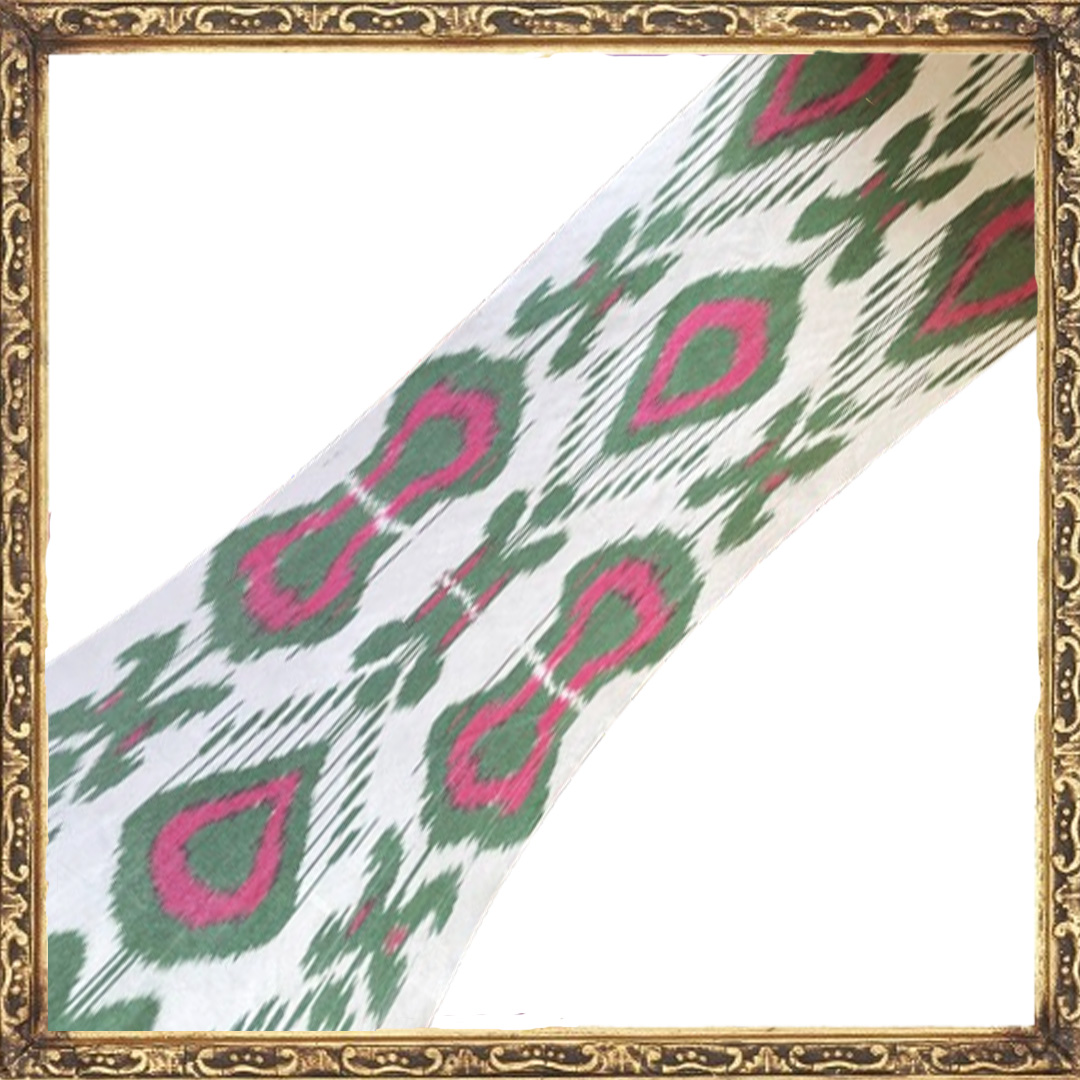
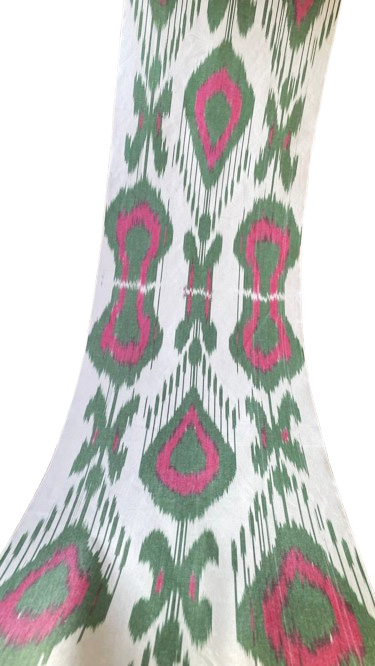
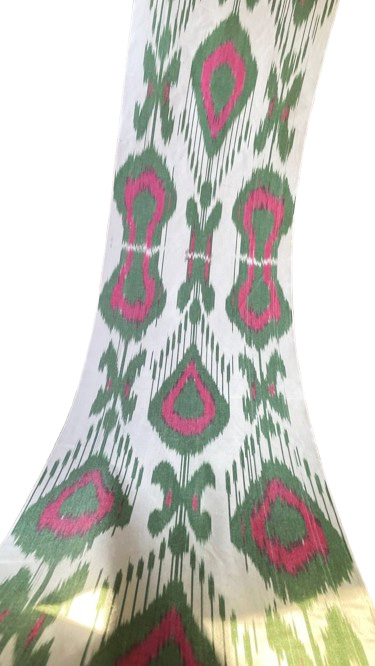
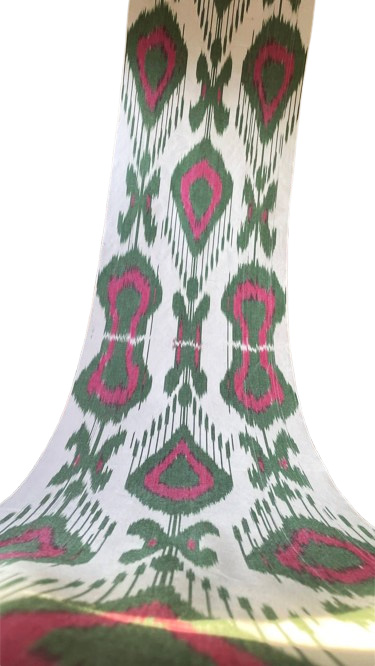
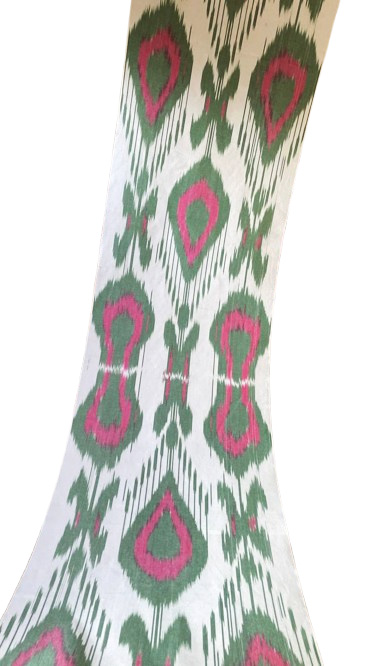
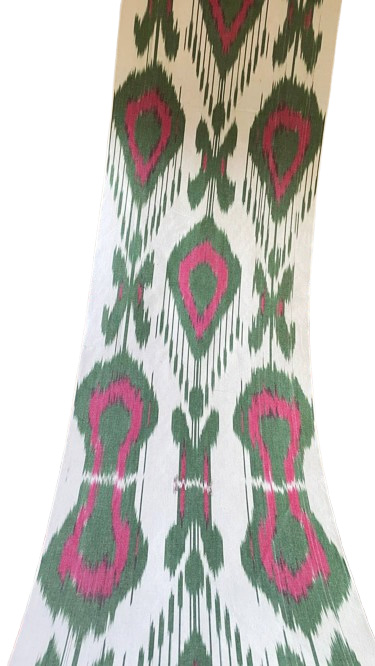




1 review for Sage pink ikat